Viking 1 at Phobos
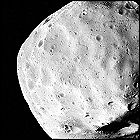 The Viking 1 orbiter, observing Mars from orbit while relaying data from the Viking 1 lander to Earth, snaps a close-up view of the Martian moon Phobos from within 5,000 miles. Though more distant from Phobos than Mariner 9’s closest pass in 1972, the Viking cameras are vastly superior, revealing greater detail even at greater distances; craters as small as 13 miles across can be seen in the images. JPL scientists and mission planners are already developing ideas for future Mars missions, including unmanned landers with wheeled rovers.
The Viking 1 orbiter, observing Mars from orbit while relaying data from the Viking 1 lander to Earth, snaps a close-up view of the Martian moon Phobos from within 5,000 miles. Though more distant from Phobos than Mariner 9’s closest pass in 1972, the Viking cameras are vastly superior, revealing greater detail even at greater distances; craters as small as 13 miles across can be seen in the images. JPL scientists and mission planners are already developing ideas for future Mars missions, including unmanned landers with wheeled rovers.
Viking 1 lands on Mars
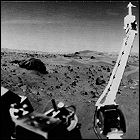 Viking 1 makes a soft landing on Mars, the first spacecraft to do so intact (the Soviet space program had been attempting to put landers on Mars, some of them including rudimentary rovers, since 1962). It successfully transmits the first picture from the Martian surface back to Earth within seconds, and successfully gathers soil samples for analysis. Viking 1’s orbiter mothership will later shut down in 1980, but the lander itself functions until 1982. Viking 1’s landing takes place on the seventh anniversary of the first manned moon landing.
Viking 1 makes a soft landing on Mars, the first spacecraft to do so intact (the Soviet space program had been attempting to put landers on Mars, some of them including rudimentary rovers, since 1962). It successfully transmits the first picture from the Martian surface back to Earth within seconds, and successfully gathers soil samples for analysis. Viking 1’s orbiter mothership will later shut down in 1980, but the lander itself functions until 1982. Viking 1’s landing takes place on the seventh anniversary of the first manned moon landing.
The Uranus Option
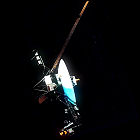 Despite the fact that a useful – and rare – alignment of the large outer planets will make a “Grand Tour” possible, NASA has only thus far funded a stripped-down version of the ambitious original Grand Tour plan, a pair of Mariner Jupiter/Saturn ’77 unmanned space probes (later renamed Voyager). Jet Propulsion Laboratory admits that scientists and mission planners have drawn up a “Uranus option” to extend the mission of one of the vehicles to reach Uranus four or five years after a Saturn encounter and gravity assist, and are making modifications to one of the vehicles to permit this contingency. (NASA has yet to approve continuing the MJS’77 program long enough to reach Uranus.) Mission planners also admit that a visit to Uranus could give the vehicle another gravity assist toward Neptune, while admitting that the odds of the vehicle surviving a journey to Neptune with its ability to gather images and scientific data intact would require “a miracle.”
Despite the fact that a useful – and rare – alignment of the large outer planets will make a “Grand Tour” possible, NASA has only thus far funded a stripped-down version of the ambitious original Grand Tour plan, a pair of Mariner Jupiter/Saturn ’77 unmanned space probes (later renamed Voyager). Jet Propulsion Laboratory admits that scientists and mission planners have drawn up a “Uranus option” to extend the mission of one of the vehicles to reach Uranus four or five years after a Saturn encounter and gravity assist, and are making modifications to one of the vehicles to permit this contingency. (NASA has yet to approve continuing the MJS’77 program long enough to reach Uranus.) Mission planners also admit that a visit to Uranus could give the vehicle another gravity assist toward Neptune, while admitting that the odds of the vehicle surviving a journey to Neptune with its ability to gather images and scientific data intact would require “a miracle.”
1975’s other international space mission
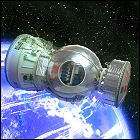 The 1972 Space Cooperation Agreement, whose most obvious effect is the Apollo-Soyuz Test Project earlier in the year, bears more fruit in the form of the first unmanned international research mission. American experiments are launched aboard a Soviet Cosmos satellite for the first time, along with experiment packages prepared by French, Czech, Polish, Romanian, and Hungarian scientists. Cosmos 782, the third “Biocosmos” flight, ends after 19 days, with the experiments landed safely in Siberia at the conclusion of the flight.
The 1972 Space Cooperation Agreement, whose most obvious effect is the Apollo-Soyuz Test Project earlier in the year, bears more fruit in the form of the first unmanned international research mission. American experiments are launched aboard a Soviet Cosmos satellite for the first time, along with experiment packages prepared by French, Czech, Polish, Romanian, and Hungarian scientists. Cosmos 782, the third “Biocosmos” flight, ends after 19 days, with the experiments landed safely in Siberia at the conclusion of the flight.
Venera 10 lands on Venus
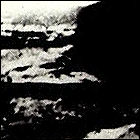 Launched less than a week after history-making sister ship Venera 9, the unmanned Soviet space probe Venera 10 lands on Venus mere days after its twin, and experiences similar system failures due to the harsh environment on the planet. Venera 10’s landing site – captured in a single picture – shows strong evidence of past lava flows.
Launched less than a week after history-making sister ship Venera 9, the unmanned Soviet space probe Venera 10 lands on Venus mere days after its twin, and experiences similar system failures due to the harsh environment on the planet. Venera 10’s landing site – captured in a single picture – shows strong evidence of past lava flows.
Venera 9: first pictures from another planet
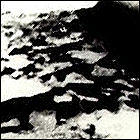 The Soviet Venera 9 unmanned space probe touches down on the surface of Venus, the first spacecraft to soft-land on another planet and send back pictures. With atmospheric pressure measured at almost 100 times Earth sea level pressure, and temperatures over 900 degrees Fahrenheit, Venera 9 manages to stay intact for barely an hour, sending back a single panoramic picture of Venus before the environment overcomes its systems.
The Soviet Venera 9 unmanned space probe touches down on the surface of Venus, the first spacecraft to soft-land on another planet and send back pictures. With atmospheric pressure measured at almost 100 times Earth sea level pressure, and temperatures over 900 degrees Fahrenheit, Venera 9 manages to stay intact for barely an hour, sending back a single panoramic picture of Venus before the environment overcomes its systems.
GOES-1 goes up
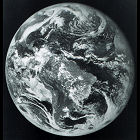 The first in a new generation of weather satellites operating in geosynchronous orbit for the National Oceanic & Atmospheric Administration, GOES-1, is launched from Cape Canaveral. An acronym for Geostationary Operational Environmental Satellite, GOES-1 is positioned over the Indian Ocean, where it is expected to become but the first in a constellation of weather satellites monitoring Earth’s atmosphere in both visible and infrared light. In 1978, GOES-1 will be repositioned over the Pacific Ocean, which it will monitor until it is decommissioned in 1985, after almost ten full years of operation.
The first in a new generation of weather satellites operating in geosynchronous orbit for the National Oceanic & Atmospheric Administration, GOES-1, is launched from Cape Canaveral. An acronym for Geostationary Operational Environmental Satellite, GOES-1 is positioned over the Indian Ocean, where it is expected to become but the first in a constellation of weather satellites monitoring Earth’s atmosphere in both visible and infrared light. In 1978, GOES-1 will be repositioned over the Pacific Ocean, which it will monitor until it is decommissioned in 1985, after almost ten full years of operation.
Viking 2 launched
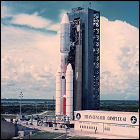 NASA launches the Viking 2 lander and orbiter, designed and operated by Jet Propulsion Laboratory, aboard a Titan IIIE rocket bound for Mars. The combined Viking 2 spacecraft will take nearly a year to reach Mars, achieving orbit in August 1976 and surveying the surface for suitable landing sites before the northern plain named Utopia Planitia is selected for a September 1976 landing attempt.
NASA launches the Viking 2 lander and orbiter, designed and operated by Jet Propulsion Laboratory, aboard a Titan IIIE rocket bound for Mars. The combined Viking 2 spacecraft will take nearly a year to reach Mars, achieving orbit in August 1976 and surveying the surface for suitable landing sites before the northern plain named Utopia Planitia is selected for a September 1976 landing attempt.
Viking 1 lifts off
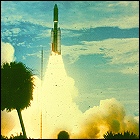 The Viking 1 unmanned space probe, built by NASA and the Jet Propulsion Laboratory, lifts off en route to the planet Mars. Intended to gather and study soil samples on-site on the Martian surface, Viking 1 will take eleven months to reach the red planet. Viking 1 is not the first attempt to land a spacecraft on Mars; the Soviet Union has been attempting such a feat since the 1960s.
The Viking 1 unmanned space probe, built by NASA and the Jet Propulsion Laboratory, lifts off en route to the planet Mars. Intended to gather and study soil samples on-site on the Martian surface, Viking 1 will take eleven months to reach the red planet. Viking 1 is not the first attempt to land a spacecraft on Mars; the Soviet Union has been attempting such a feat since the 1960s.
Nimbus 6
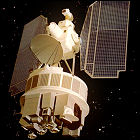 NASA launches the Nimbus 6 satellite, designed to observe weather patterns from orbit and test new weather and climate detection technologies. In addition to continuing the microwave and infrared observations carried out by Nimbus 5, Nimbus 6 studies the amount of solar radiation reaching or reflected by Earth, and sends real-time observations to the experimental ATS-6 satellite, allowing NASA to test techniques and technologies that will be used in the shuttle-era TDRS (Tracking & Data Relay Satellite) system.
NASA launches the Nimbus 6 satellite, designed to observe weather patterns from orbit and test new weather and climate detection technologies. In addition to continuing the microwave and infrared observations carried out by Nimbus 5, Nimbus 6 studies the amount of solar radiation reaching or reflected by Earth, and sends real-time observations to the experimental ATS-6 satellite, allowing NASA to test techniques and technologies that will be used in the shuttle-era TDRS (Tracking & Data Relay Satellite) system.
SAS-C
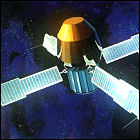 NASA launches Explorer 53, renamed Small Astronomy Satellite C, from an Italian-owned offshore launch platform off the coast of Kenya. SAS-C is a smaller spacecraft than NASA’s larger Orbiting Astronomical Observatory (OAO) series, but can be aimed very precisely at any cosmic X-ray sources that it detects. One of SAS-C’s discoveries is MXB1730-33, a binary star giving off rapid X-ray bursts. SAS-C will remain in orbit and functional until it re-enters Earth’s atmosphere in 1979.
NASA launches Explorer 53, renamed Small Astronomy Satellite C, from an Italian-owned offshore launch platform off the coast of Kenya. SAS-C is a smaller spacecraft than NASA’s larger Orbiting Astronomical Observatory (OAO) series, but can be aimed very precisely at any cosmic X-ray sources that it detects. One of SAS-C’s discoveries is MXB1730-33, a binary star giving off rapid X-ray bursts. SAS-C will remain in orbit and functional until it re-enters Earth’s atmosphere in 1979.
Mariner 10: one last visit to Mercury
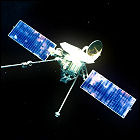 The NASA/JPL probe to the inner planets, Mariner 10, makes its last flyby of Mercury, zipping over the planet’s north pole at an altitude of just over 200 miles, and taking the last close-up pictures of Mercury until the Messenger space probe in 2008. Just over a week after its final Mercury encounter, Mariner 10 runs out of fuel and is instructed to shut down. The next Mariner probes, Mariners 11 and 12, are slated to venture toward the outer solar system, and eventually undergo a name change, becoming Voyagers 1 and 2 – making Mariner 10 the last of the Mariner space probes.
The NASA/JPL probe to the inner planets, Mariner 10, makes its last flyby of Mercury, zipping over the planet’s north pole at an altitude of just over 200 miles, and taking the last close-up pictures of Mercury until the Messenger space probe in 2008. Just over a week after its final Mercury encounter, Mariner 10 runs out of fuel and is instructed to shut down. The next Mariner probes, Mariners 11 and 12, are slated to venture toward the outer solar system, and eventually undergo a name change, becoming Voyagers 1 and 2 – making Mariner 10 the last of the Mariner space probes.
Landsat 2
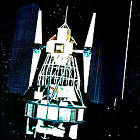 NASA launches its second Landsat satellite, originally named ERTS-2 (Earth Resource Technology Satellite) and still based on the Nimbus experimental weather and Earth-observation satellites. Originally intended to be online for a year, Landsat 2 functions through 1982, carrying a suite of instruments and sensors nearly identical to that of Landsat 1.
NASA launches its second Landsat satellite, originally named ERTS-2 (Earth Resource Technology Satellite) and still based on the Nimbus experimental weather and Earth-observation satellites. Originally intended to be online for a year, Landsat 2 functions through 1982, carrying a suite of instruments and sensors nearly identical to that of Landsat 1.
Pioneer 11 visits Jupiter
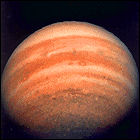 NASA’s Pioneer 11 space probe passes close to Jupiter, barely 27,000 miles above the giant planet’s cloudtops, again encountering radiation capable of frying spacecraft electronics. Pioneer 11 captures the first images of Jupiter’s polar cloud structure and pulls off a daring gravity assist maneuver: the planet’s gravity flings Pioneer 11 up and over the north polar region and across the solar system for a 1979 rendezvous with Saturn, the first spacecraft to visit that planet.
NASA’s Pioneer 11 space probe passes close to Jupiter, barely 27,000 miles above the giant planet’s cloudtops, again encountering radiation capable of frying spacecraft electronics. Pioneer 11 captures the first images of Jupiter’s polar cloud structure and pulls off a daring gravity assist maneuver: the planet’s gravity flings Pioneer 11 up and over the north polar region and across the solar system for a 1979 rendezvous with Saturn, the first spacecraft to visit that planet.
NOAA-4
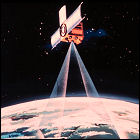 NASA and the National Oceanic & Atmospheric Administration launch NOAA-4, a weather satellite intended to operate in a near-polar low Earth orbit. NOAA-4 is based on the already-flown ITOS satellite design, and will operate without any major malfunctions through November 1978.
NASA and the National Oceanic & Atmospheric Administration launch NOAA-4, a weather satellite intended to operate in a near-polar low Earth orbit. NOAA-4 is based on the already-flown ITOS satellite design, and will operate without any major malfunctions through November 1978.
Luna 23
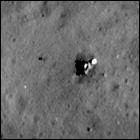 The Soviet Union launches the unmanned space probe Luna 23 toward the moon, intended to gather surface samples from the Mare Imbrium region for return to Earth. The sample collection hardware is unable to complete its task after landing, and ground controllers are only able to receive partial scientific data from the lander, whose batteries run out within three days of landing. It won’t be until 2012, when NASA’s Lunar Reconnaissance Orbiter photographs Luna 23’s landing site from orbit, that the truth will be learned: the lander tipped over on its side during a descent mishap, leaving it intact but unable to gather a soil sample.
The Soviet Union launches the unmanned space probe Luna 23 toward the moon, intended to gather surface samples from the Mare Imbrium region for return to Earth. The sample collection hardware is unable to complete its task after landing, and ground controllers are only able to receive partial scientific data from the lander, whose batteries run out within three days of landing. It won’t be until 2012, when NASA’s Lunar Reconnaissance Orbiter photographs Luna 23’s landing site from orbit, that the truth will be learned: the lander tipped over on its side during a descent mishap, leaving it intact but unable to gather a soil sample.
Mariner 10, Mercury 2
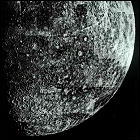 NASA’s unmanned space probe Mariner 10 makes its second pass of the planet Mercury, six months after its first flyby. This time Mariner passes under the planet’s south pole, getting the first views of that part of Mercury, but barely flying within 30,000 miles of the surface. Once again, following its encounter with Mercury, Mariner 10 slipped into a solar orbit that would bring it back to Mercury several months later.
NASA’s unmanned space probe Mariner 10 makes its second pass of the planet Mercury, six months after its first flyby. This time Mariner passes under the planet’s south pole, getting the first views of that part of Mercury, but barely flying within 30,000 miles of the surface. Once again, following its encounter with Mercury, Mariner 10 slipped into a solar orbit that would bring it back to Mercury several months later.
Luna 22
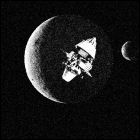 The Soviet Union launches the unmanned space probe Luna 22 toward the moon, the last of the moon-orbiting Luna missions (the remaining vehicles in the series will be attempted landings). Luna 22 remains operational in lunar orbit for 17 months.
The Soviet Union launches the unmanned space probe Luna 22 toward the moon, the last of the moon-orbiting Luna missions (the remaining vehicles in the series will be attempted landings). Luna 22 remains operational in lunar orbit for 17 months.
Mariner 10 visits Mercury
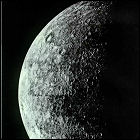 After using the gravity of the larger planet Venus to fling it further toward the sun, NASA’s unmanned space probe Mariner 10 zips by the innermost planet, Mercury, less than 500 miles away from its cratered surface. Its cameras capture the first-ever views of the barren planet, whose surface temperatures vary between frigid on the night side and oven-baked on the hemisphere facing the sun. Mariner 10 passes behind the sun, catching up with Mercury again half a year later.
After using the gravity of the larger planet Venus to fling it further toward the sun, NASA’s unmanned space probe Mariner 10 zips by the innermost planet, Mercury, less than 500 miles away from its cratered surface. Its cameras capture the first-ever views of the barren planet, whose surface temperatures vary between frigid on the night side and oven-baked on the hemisphere facing the sun. Mariner 10 passes behind the sun, catching up with Mercury again half a year later.
Titan IIIe
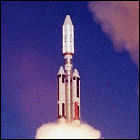 In advance of the Viking and Voyager interplanetary missions, which will need more powerful boosters to heft heavier spacecraft into deep space, NASA conducts a test launch of the Titan IIIe/Centaur launch stack, an experimental combination of the venerable Titan rocket and a liquid-fueled Centaur upper stage. Previous Centaur upper stages were attached to wider Atlas rockets, so the unusual bulb-shaped payload shroud of the Centaur is of concern when placed atop the Titan, which has a more narrow diameter; if successful, however, this configuration could launch payloads three times larger than an Atlas/Centaur combination. The test flight, originally scheduled for January 24th, actually fails – a loose part causes the Centaur stage to fizzle rather than fire – and the rocket is destroyed in mid-air. However, with worries about the large Centaur payload atop the narrow Titan rocket laid to rest, NASA approves the Titan IIIe/Centaur for flight, beginning with the launch of a joint American/German science satellite, HELIOS-1, later in 1974.
In advance of the Viking and Voyager interplanetary missions, which will need more powerful boosters to heft heavier spacecraft into deep space, NASA conducts a test launch of the Titan IIIe/Centaur launch stack, an experimental combination of the venerable Titan rocket and a liquid-fueled Centaur upper stage. Previous Centaur upper stages were attached to wider Atlas rockets, so the unusual bulb-shaped payload shroud of the Centaur is of concern when placed atop the Titan, which has a more narrow diameter; if successful, however, this configuration could launch payloads three times larger than an Atlas/Centaur combination. The test flight, originally scheduled for January 24th, actually fails – a loose part causes the Centaur stage to fizzle rather than fire – and the rocket is destroyed in mid-air. However, with worries about the large Centaur payload atop the narrow Titan rocket laid to rest, NASA approves the Titan IIIe/Centaur for flight, beginning with the launch of a joint American/German science satellite, HELIOS-1, later in 1974.
Mariner 10 visits Venus
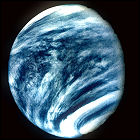 The unmanned Mariner 10 space probe swings past the planet Venus at a distance of less than 4,000 miles, its cameras capturing a completely opaque sphere whose clouds reveal no surface. But when viewed through ultraviolet filters, Venus suddenly reveals an immense amount of atmospheric detail. Mariner 10’s UV views of Venus are the best images available until the dual Pioneer Venus mission of the late 1970s; meanwhile, Mariner 10 speeds past the planet en route to Mercury.
The unmanned Mariner 10 space probe swings past the planet Venus at a distance of less than 4,000 miles, its cameras capturing a completely opaque sphere whose clouds reveal no surface. But when viewed through ultraviolet filters, Venus suddenly reveals an immense amount of atmospheric detail. Mariner 10’s UV views of Venus are the best images available until the dual Pioneer Venus mission of the late 1970s; meanwhile, Mariner 10 speeds past the planet en route to Mercury.
Pioneer 10: Jupiter’s first visitor from Earth
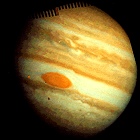 NASA’s Pioneer 10 space probe, launched in 1972 and boosted to unprecedented speeds by a three-stage rocket, makes its closest pass to the planet Jupiter, the first human-made vehicle to do so. Zooming past Jupiter’s equator at a distance of less than 100,000 miles, Pioneer 10’s electronics are nearly fried by the giant planet’s intense radiation. Pioneer 10 presses on toward the edge of the solar system, continuing to report back through the 1990s.
NASA’s Pioneer 10 space probe, launched in 1972 and boosted to unprecedented speeds by a three-stage rocket, makes its closest pass to the planet Jupiter, the first human-made vehicle to do so. Zooming past Jupiter’s equator at a distance of less than 100,000 miles, Pioneer 10’s electronics are nearly fried by the giant planet’s intense radiation. Pioneer 10 presses on toward the edge of the solar system, continuing to report back through the 1990s.
NOAA-3
 NASA and the National Oceanic & Atmospheric Administration launch NOAA-3, a weather satellite intended to operate in a near-polar low Earth orbit. NOAA-3 is based on the already-flown ITOS satellite design, and will wait in orbit until March 1974, when the failure of an instrument aboard its predecessor, NOAA-2, requires putting NOAA-3 on full weather-watching duty, where it will remain without any major malfunctions through August 1976.
NASA and the National Oceanic & Atmospheric Administration launch NOAA-3, a weather satellite intended to operate in a near-polar low Earth orbit. NOAA-3 is based on the already-flown ITOS satellite design, and will wait in orbit until March 1974, when the failure of an instrument aboard its predecessor, NOAA-2, requires putting NOAA-3 on full weather-watching duty, where it will remain without any major malfunctions through August 1976.
Mariner 10 launched
 The first unmanned space probe to use a gravity assist maneuver to get from one planet to another in a reduced amount of time, Mariner 10 is lauched on a course for the planet Venus, where a carefully planned trajectory allows it to take pictures and measurements at that planet before using Venus’ gravity to fling Mariner 10 inward toward Mercury, allowing it to reach two planets in under two months. It will be the first space probe to visit Mercury.
The first unmanned space probe to use a gravity assist maneuver to get from one planet to another in a reduced amount of time, Mariner 10 is lauched on a course for the planet Venus, where a carefully planned trajectory allows it to take pictures and measurements at that planet before using Venus’ gravity to fling Mariner 10 inward toward Mercury, allowing it to reach two planets in under two months. It will be the first space probe to visit Mercury.
Pioneer 11 launched
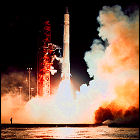 The unmanned space probe Pioneer 11 is launched on a course that will be one of the first real tests of the theory of gravity assist. Reaching Jupiter in 1975, it will use the giant planet’s gravity to throw it across the solar system to rendezvous with Saturn, the first human-made vehicle to visit that planet. The experience gained with Pioneer 11’s groundbreaking trajectory through the solar system will prove instrumental in the upcoming Mariner Jupter/Saturn ’77 mission, which is later be renamed Voyager.
The unmanned space probe Pioneer 11 is launched on a course that will be one of the first real tests of the theory of gravity assist. Reaching Jupiter in 1975, it will use the giant planet’s gravity to throw it across the solar system to rendezvous with Saturn, the first human-made vehicle to visit that planet. The experience gained with Pioneer 11’s groundbreaking trajectory through the solar system will prove instrumental in the upcoming Mariner Jupter/Saturn ’77 mission, which is later be renamed Voyager.
Luna 21 and Lunokhod 2
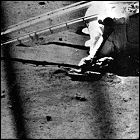 The Soviet Union launches unmanned space probe Luna 21 toward the moon, carrying the Lunokhod 2 robotic rover. Like Lunokhod 1, this rover is solar-powered and can operate independently of its lander, though ground controllers push this vehicle further. Five months into its mission, Lunokhod is driven into a crater from which it is unable to escape; the mission is declared over a month later. This mission is not intended to return lunar soil samples to Earth.
The Soviet Union launches unmanned space probe Luna 21 toward the moon, carrying the Lunokhod 2 robotic rover. Like Lunokhod 1, this rover is solar-powered and can operate independently of its lander, though ground controllers push this vehicle further. Five months into its mission, Lunokhod is driven into a crater from which it is unable to escape; the mission is declared over a month later. This mission is not intended to return lunar soil samples to Earth.
Nimbus 5
 NASA launches the Nimbus 5 satellite, designed to observe weather patterns from orbit and test new weather and climate detection technologies. Launched into a polar orbit from Vandenberg Air Force Base in California, Nimbus 5 includes newly-developed experiments to examine Earth in the microwave and infrared portions of the spectrum.
NASA launches the Nimbus 5 satellite, designed to observe weather patterns from orbit and test new weather and climate detection technologies. Launched into a polar orbit from Vandenberg Air Force Base in California, Nimbus 5 includes newly-developed experiments to examine Earth in the microwave and infrared portions of the spectrum.
N1 Flight #4
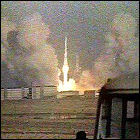 The Soviet space program, still determined to reach the moon, again loads an unmanned Soyuz/Korabl capsule and lander combo onto the huge N1 rocket for another test launch. At an altitude of nearly 25 miles, the N1 experiences severe structural stresses and disintegrates in mid-air, effectively ending the Soviet drive for the moon. Another N1 is prepared for another launch, with an eye toward orbiting a massive space station with which to upstage the upcoming American Skylab station, only to be dismantled on the ground in favor of more reliable launch vehicles.
The Soviet space program, still determined to reach the moon, again loads an unmanned Soyuz/Korabl capsule and lander combo onto the huge N1 rocket for another test launch. At an altitude of nearly 25 miles, the N1 experiences severe structural stresses and disintegrates in mid-air, effectively ending the Soviet drive for the moon. Another N1 is prepared for another launch, with an eye toward orbiting a massive space station with which to upstage the upcoming American Skylab station, only to be dismantled on the ground in favor of more reliable launch vehicles.
SAS-B
 NASA launches Explorer 48, renamed Small Astronomy Satellite B, from an Italian-owned offshore launch platform off the coast of Kenya. SAS-B is a smaller spacecraft than NASA’s larger Orbiting Astronomical Observatory (OAO) series, but can be aimed very precisely at any gamma ray sources that it detects. One of those sources turns out to be the pulsar remnant of a massive supernova, a discovery later named Geminga. An electrical fault will end SAS-B’s functionality in June 1973, and it will re-enter Earth’s atmosphere in 1976.
NASA launches Explorer 48, renamed Small Astronomy Satellite B, from an Italian-owned offshore launch platform off the coast of Kenya. SAS-B is a smaller spacecraft than NASA’s larger Orbiting Astronomical Observatory (OAO) series, but can be aimed very precisely at any gamma ray sources that it detects. One of those sources turns out to be the pulsar remnant of a massive supernova, a discovery later named Geminga. An electrical fault will end SAS-B’s functionality in June 1973, and it will re-enter Earth’s atmosphere in 1976.
Mariner 9: mission accomplished
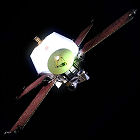 The unmanned NASA/JPL space probe Mariner 9 concludes its mission to map the surface of Mars. After spending more than a year as the first human spacecraft to orbit another planet in the solar system, Mariner 9’s fuel supply has run out, but not before it has obtained over 7,000 images of the surface of Mars, discovering gigantic volcanoes and huge canyons in the process. The detailed photography returned by Mariner 9 is a vitally important tool for scientists and mission planners already hard at work on a potential robotic landing mission to Mars, to be launched later in the 1970s. Though inactive, Mariner 9 remains in orbit of Mars.
The unmanned NASA/JPL space probe Mariner 9 concludes its mission to map the surface of Mars. After spending more than a year as the first human spacecraft to orbit another planet in the solar system, Mariner 9’s fuel supply has run out, but not before it has obtained over 7,000 images of the surface of Mars, discovering gigantic volcanoes and huge canyons in the process. The detailed photography returned by Mariner 9 is a vitally important tool for scientists and mission planners already hard at work on a potential robotic landing mission to Mars, to be launched later in the 1970s. Though inactive, Mariner 9 remains in orbit of Mars.